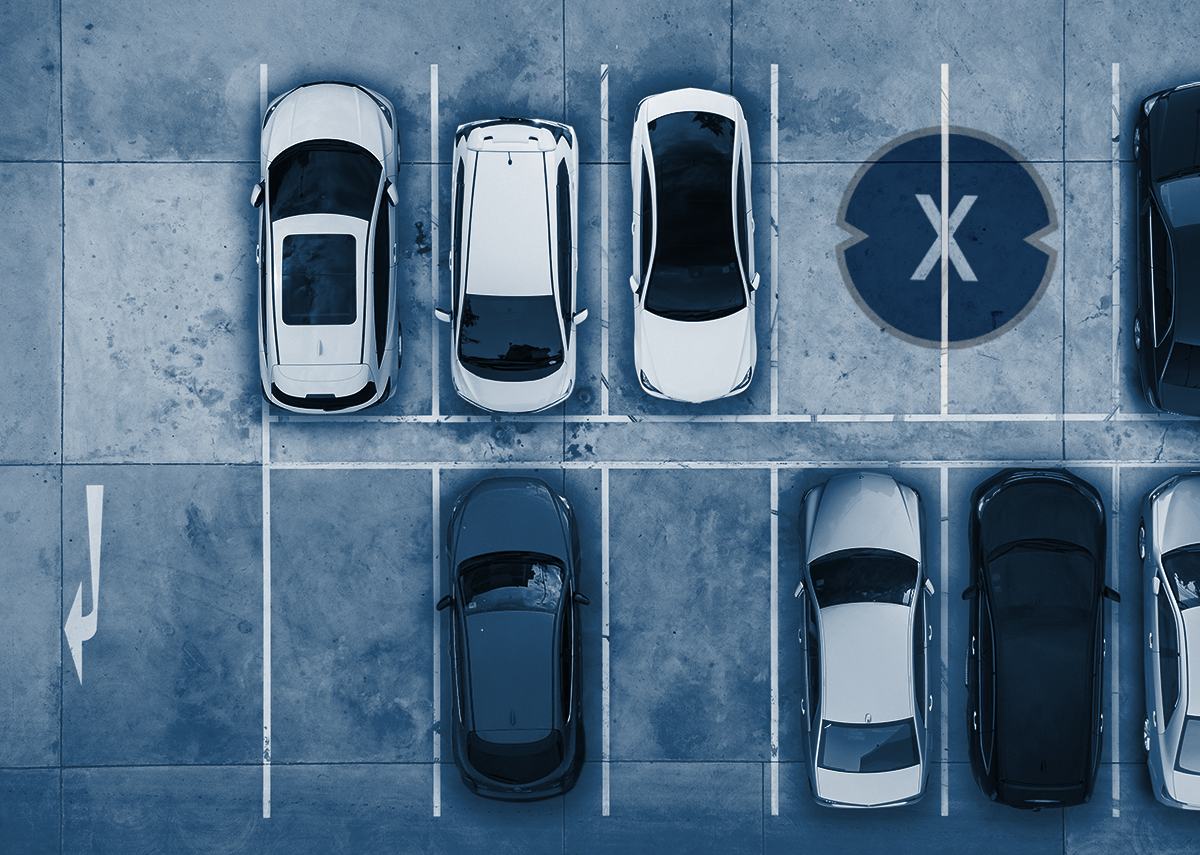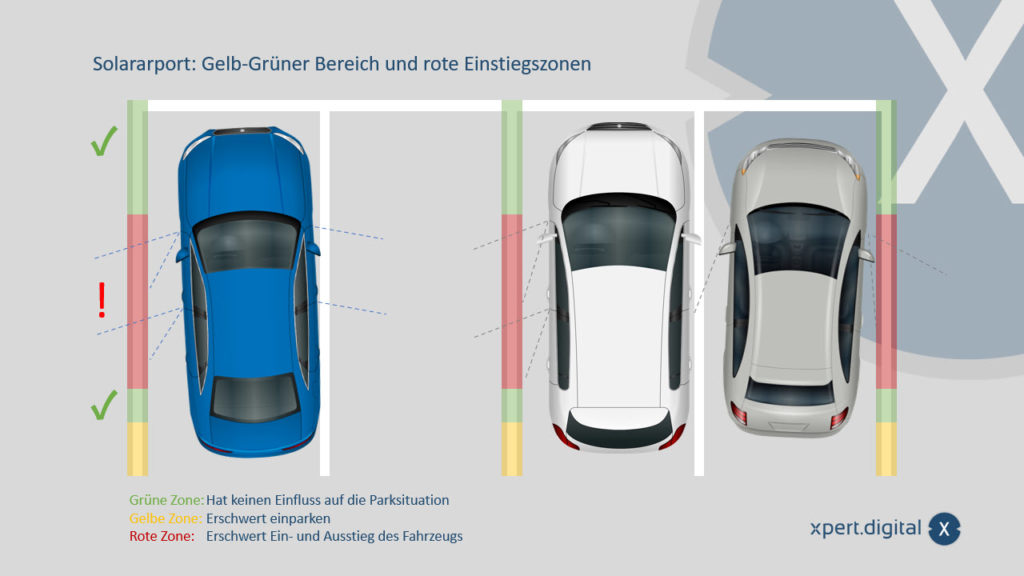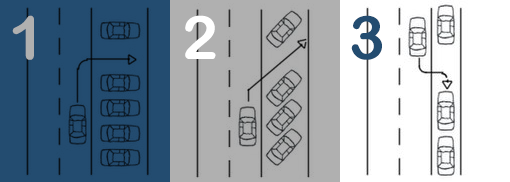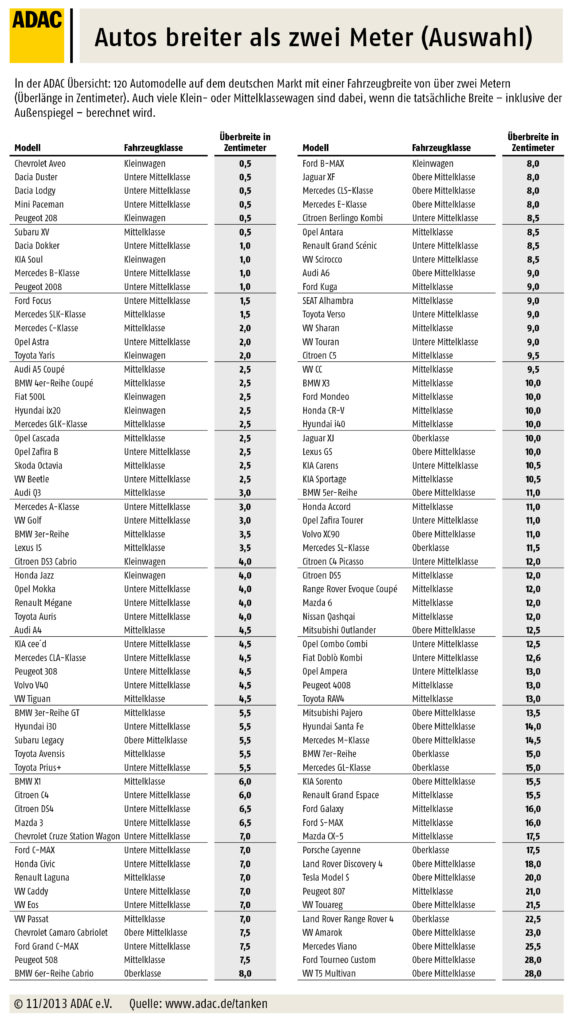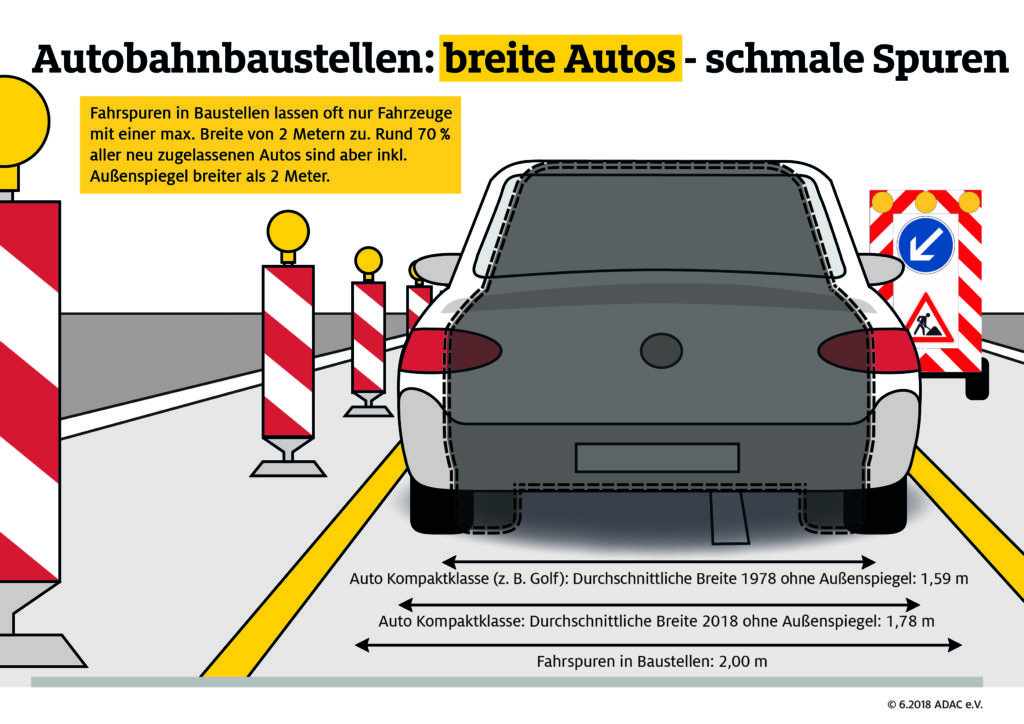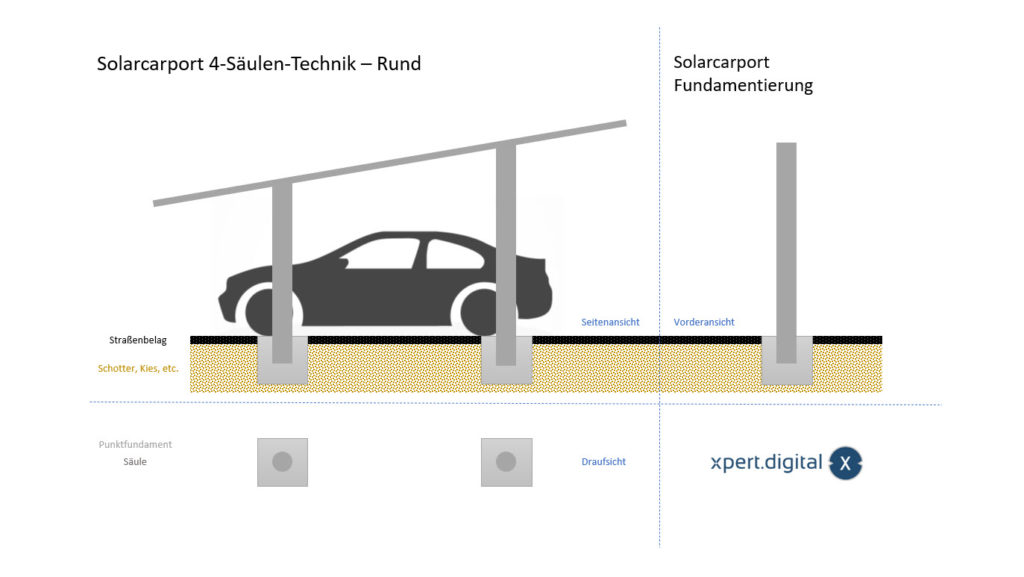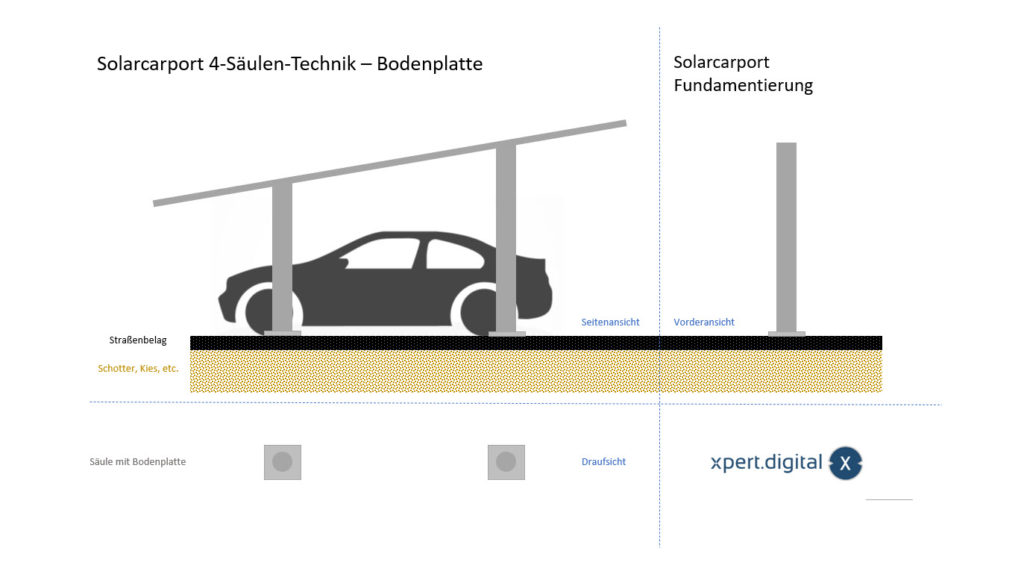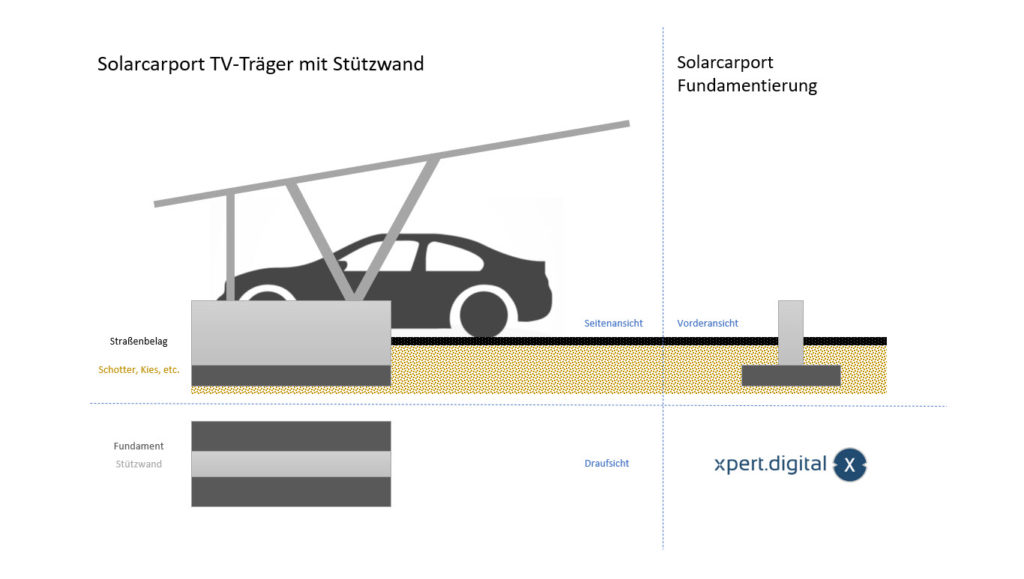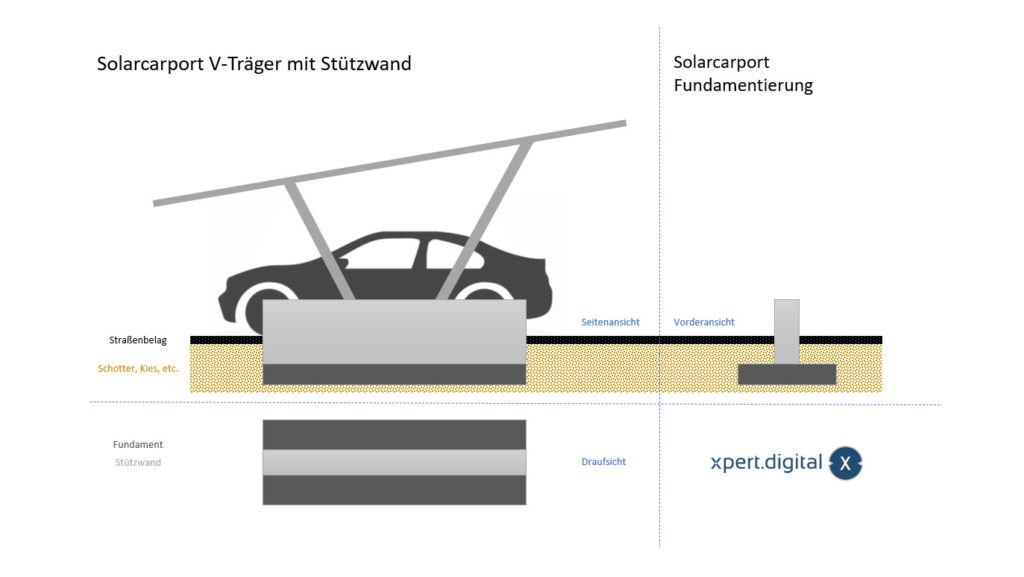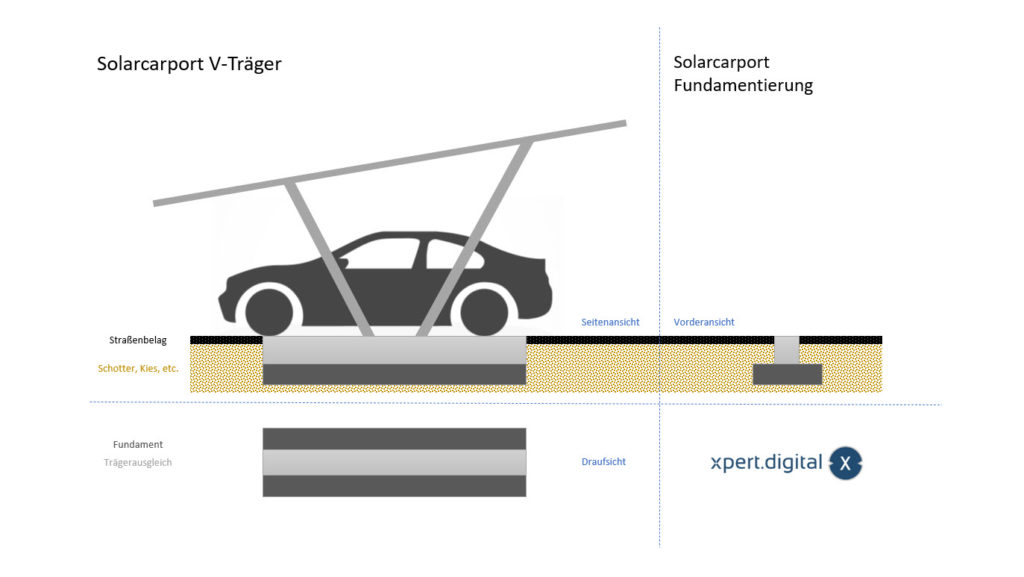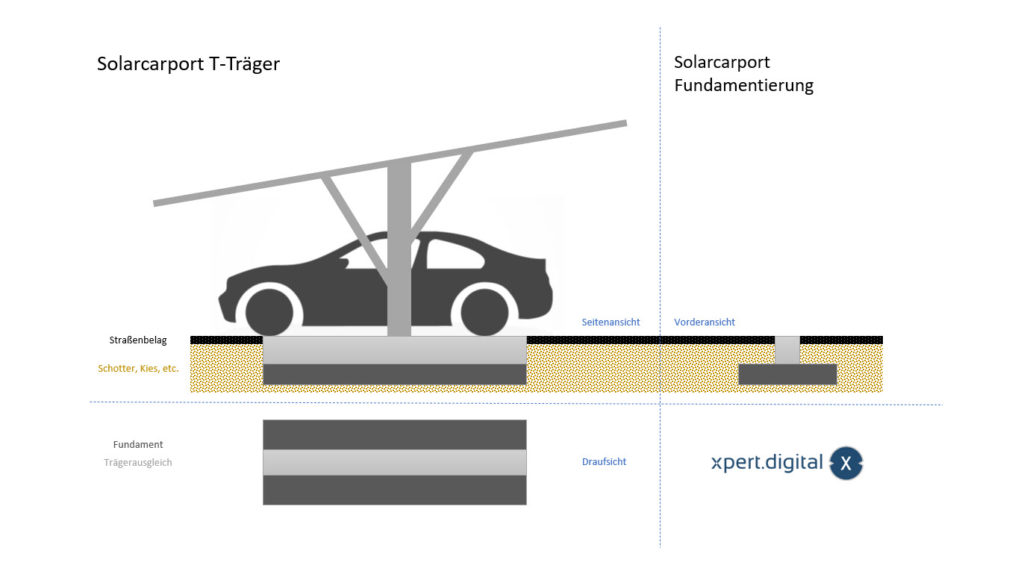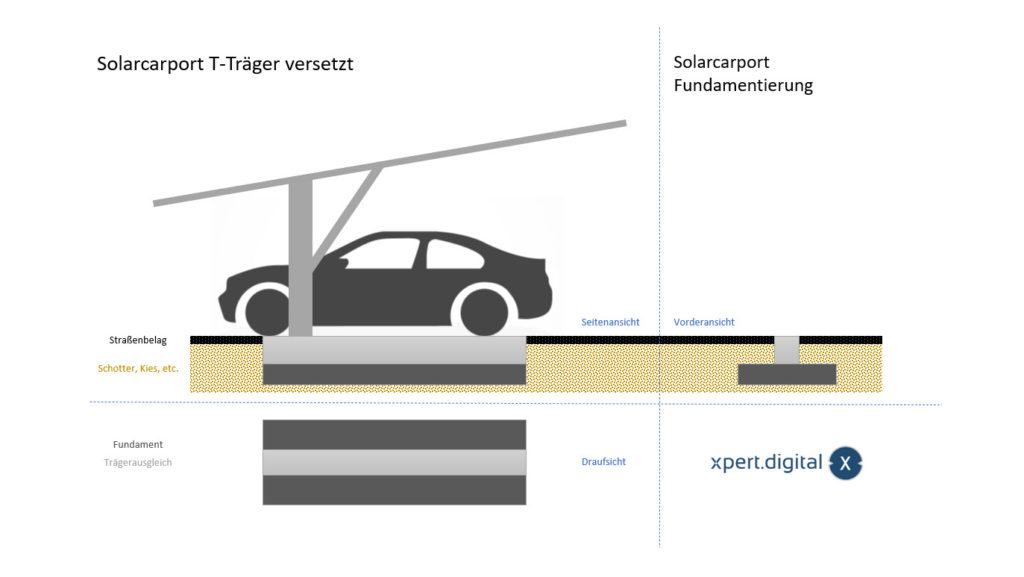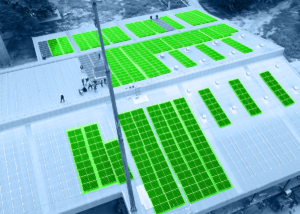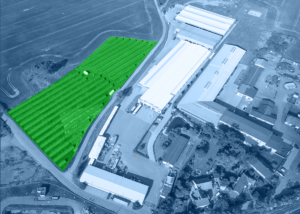The parking space requirement, the solar requirement, types of parking spaces and the solar carport strategy for open parking spaces
Language selection 📢
Published on: April 11, 2022 / update from: May 31, 2023 - Author: Konrad Wolfenstein
The new parking strategy: What you should know beforehand!
Parking is no longer a walk in the park. Just thinking about the underground parking spaces or the large parking spaces in some shopping centers can make some people sweat from stress.
Each of us has performed many acrobatic feats when getting in and out of the car in the past, and subliminally we look for the parking space that has at least one free space next to it. That doesn't always work. Parking does not fit in with the brilliantly advertised great shopping experiences and the great shopping atmosphere.
Parking spaces are generally between 2.0 m and 3.5 m wide (disabled parking space). The required length ranges from 5 m to 6.7 m.
In some federal states, in addition to the parking space requirement, there is now also a solar requirement, including for open parking spaces. In the transverse position (row parking spaces), 2.3 meters are standard.
Over the last 40 years, however, vehicles have become increasingly wider. There are cars that are up to 1.94 meters wide (BMW X5). The Jeep Grand Cherokee or the Ford Galaxy and S-Max models are even 2.15 meters wide with exterior mirrors!
According to the ADAC, 70% of newly registered cars are wider than 2.0 meters. The ADAC has been demanding a minimum parking space width of 2.5 meters for years.
Together with photovoltaics, a new parking strategy is required if the new parking spaces are not to become a fiasco and, for example, in the commercial sector, customers stay away due to the lack of parking spaces.
There is already a lot of space in the parking area and a roof with solar modules won't make it any better. Some solar carport models even reduce the already limited parking space.
Therefore, choosing the right solar carport system is important!
There are various substructures and solar carport models that are more or less suitable for larger to large parking spaces.
Roof racks for the substructure of the solar modules, which are located in the red zone, not only narrow the parking space (again if the single parking space was increased from 2.3 m to 2.5 m), they also make it extremely difficult to get in and out .
Solar module roof racks located in the green area have no influence on the parking situation.
Photovoltaic roof racks located in the yellow area make it difficult to park and unpark comfortably.
Suitable for:
When determining the price of the solar carport substructure, also take into account the installation effort and working time!
Some solar carport systems require complex foundations. Some of these are not ideal in terms of entry and exit options for vehicle occupants.
At the moment it is also the case that slanted parking spaces are currently only possible with the 4+2+ solar carport column technology.
Suitable for:
It is also important to take into account the effort required to tear up and work on areas that have already been sealed for the selected solar carport system. Additional costs will be added with the redesign of the roadway.
In some cases, a comprehensive foundation is not possible due to underground pipes or other ground conditions. Some solar carport systems are already out of the question.
It is therefore also important for solar installers and construction companies to know which system is easiest and most uncomplicated to work with.
Suitable for:
Open parking spaces: Types of parking spaces, minimum distances and required aisle width
A distinction is made between three types of parking spaces (also vehicle placement or parking space placement):
- Transverse installation
The transverse installation (also vertical installation) has an installation angle of 90°. Here the vehicle can either retract forwards or backwards. This setup is more likely to be found on side streets and in parking lots. Section 12 Paragraph 4 of the StVO must be observed here, which means that the appropriate markings or signage must be present so that parking is permitted. - Inclined installation
If the installation angle is between 45° and approx. 81°, this is referred to as inclined installation. The vehicle can drive forward into the parking space, but must reverse out again to leave the parking space. This setup is often used in parking lots because it allows for narrower driveways than vertical setup and better use of space than parallel setup. It is only permitted if there are appropriate markings, otherwise Section 12 Paragraph 4 of the StVO would be violated. - Longitudinal installation
With longitudinal installation, parking is parallel to the road (according to Section 12 StVO). The vehicles reach the parking position directly from the road and can park backwards or, if there is enough space, forwards and drive out forwards or backwards. This vehicle setup is the most common type of setup on roads and is generally exempt from the solar requirement.
In Germany, the legal basis is the recommendations for stationary traffic systems (EAR). It is a valid technical set of rules for the planning and construction of stationary traffic systems. This includes parking areas and parking structures as well as parking guidance systems. They are published by the Research Society for Roads and Transport.
The following information may vary depending on the federal state:
Parking distances for open parking spaces
Required tramline width for parking spaces
📣 Parking areas solar solutions for industry, retail and municipalities
Everything from a single source, specially designed for solar solutions for large parking areas. You refinance or counterfinance into the future with your own electricity generation.
🎯 For solar engineers, plumbers, electricians and roofers
Advice and planning including a non-binding cost estimate. We bring you together with strong photovoltaic partners.
👨🏻 👩🏻 👴🏻 👵🏻 For private households
We are positioned across regions in German-speaking countries. We have reliable partners who advise you and implement your wishes.
Things worth knowing about the parking requirement
When building on a property in Germany and Austria, a certain minimum number of parking spaces must be proven on the property or in the immediate vicinity, depending on the planned use. These parking spaces are referred to as necessary parking spaces. The number of parking spaces required is determined by the building regulations of the federal states or from the parking space regulations or parking statutes of the municipalities.
In Germany, parking space regulations and parking space statutes regulate how many parking spaces for motor vehicles and bicycles must be provided when a new building is built on the property or nearby. The number of parking spaces required depends on the use of the building and the number of users (e.g. the number of parking spaces in residential buildings is determined depending on the number of residential units). The specifications are partly based on technical and statistical findings, such as: B. the level of motorization.
In Germany, the requirements are now generally regulated by the building regulations of the federal states. In principle, the necessary motor vehicle and bicycle parking spaces must be built on the building site or on a nearby property for structures that are expected to have incoming and outgoing traffic. The scope of the parking space obligation is determined by the building supervisory authority.
In some federal states (e.g. Brandenburg), the state building regulations have been changed in recent years so that there is no longer a nationwide uniform parking space requirement. Instead, municipalities can issue parking regulations.
In the state of Berlin, according to Section 49 of the building regulations, there is a parking requirement only for disabled parking spaces in publicly accessible buildings and parking spaces for bicycles.
In 2013, Hamburg abolished the requirement to set up parking spaces for apartments. Since 2015, Baden-Württemberg's state building regulations have provided for the possibility of eliminating a quarter of the vehicle parking spaces through more bicycle parking spaces - four bicycle spaces replace one car parking space.
Garage regulations
The garage regulations (GarVO, GaVO or GaStellV) or special building regulations of the federal states provide the regulations for the construction and operation of garages and parking spaces:
- Minimum width and the minimum curve radius of entrances and exits
- Minimum length and width of parking spaces
- Minimum width of tramlines
- Minimum proportion of women's parking spaces
- Minimum height
Berlin and North Rhine-Westphalia do not have their own garage regulations. In Berlin it was repealed in 2004 by the regulation on testing of technical systems and facilities (System Testing Ordinance - AnlPrüfVO). In North Rhine-Westphalia, the contents of the 2009 garage ordinance were integrated into the ordinance on the construction and operation of special buildings. Most federal states have adopted the ARGEBAU model garage regulations (working group of ministers responsible for construction) or refer to them.
However, the common set of rules for public parking spaces is RASt 06 (Guidelines for the layout of city streets).
Selection of cars wider than two meters
Modern cars are getting wider and wider. In many cases, car owners are not even aware of this because the actual width is not stated in the vehicle registration document. Problems with the infrastructure are inevitable (construction sites, parking garages).
For this reason, the ADAC has created a selection list of 120 affected cars as a small guide for drivers.
Cars are getting wider and wider - but the infrastructure is not growing with them. This problem is particularly evident in highway construction sites. Here, even the left lane is often closed to vehicles that are wider than two meters. Problem: Even many small cars exceed this mark today. In many cases, car owners are not even aware of this because the actual width is not stated in the vehicle registration document.
For this reason, the ADAC has created a list of 120 affected cars as a small guide for drivers. For this list, which only represents a selection, the actual widths, including exterior mirrors, were measured. Even supposedly narrow cars such as the Ford Focus, the Honda Civic or the Peugeot 308 are cars that are too wide.
Anyone who owns a car that is wider than two meters will also have problems in many parking garages. Damage when getting in and out is almost inevitable. That's why the club requires a parking space width of 2.50 meters. The last ADAC parking garage test emphasized this requirement again.
Suitable for:
For years, around 70 percent of newly registered cars with exterior mirrors have been wider than two meters. Therefore, such a narrowing of the lane in construction sites is no longer appropriate. According to the ADAC, wider temporary lanes that allow an actual vehicle width of up to 2.1 meters are necessary.
Even compact class vehicles (such as a VW Golf) are often too wide for the narrow construction site lanes. The result: In many construction site lanes, only small cars and motorcycles are allowed to drive on the left. To know how wide your vehicle is, just looking at the vehicle documents is not enough. Only the value without exterior mirrors is given there. Drivers should find out about the actual width of their vehicle and measure it if necessary
The second most common cause of accidents in construction sites is the collision between vehicles driving side by side. In order to minimize the risk of accidents, the ADAC advises driving away from construction zones and avoiding unnecessary overtaking maneuvers. The same applies here: Staggered driving only makes sense if the left lane can be used by a sufficient number of vehicles.
Traffic jams in front of construction sites can be avoided by maintaining the number of lanes in the construction site. If a track falls away, you have to thread it using the zipper method. The following applies: drive as far as possible to the obstacle and only then merge. Failure to follow the zipper procedure can result in a fine of 20 euros. It is also important to drive particularly carefully in construction zones and to keep a sufficient distance from the vehicle in front.
Typical solar carport systems at a glance
- Modular solar carport system with 4+ 2+ columns, round – Image: Xpert.Digital
- Modular solar carport system with base plate – Image: Xpert.Digital
- TV carrier solar carport with supporting wall – Image: Xpert.Digital
- V-beam solar carport with supporting wall – Image: Xpert.Digital
- V-beam solar carport – Image: Xpert.Digital
- Solar carport with T-beam – Image: Xpert.Digital
- Solar carport with offset T-beam – Image: Xpert.Digital
More about it here:
Everything about PV photovoltaic parking spaces, solar roofing for open parking spaces or solar carports and solar carports
Guide – concepts – strategies – useful information
Part I – The parking space requirement, the solar requirement, types of parking spaces and the solar carport strategy for open parking spaces
➡️ Focus on entry and exit zones
Part II – Photovoltaic parking lot: “Smart Solar Park Concept” for parking, exit and entry
➡️ Focus on parking and exiting situations
Part III - Guide and tips for solar carports from small to large systems - for municipalities, industry, installers and private households
➡️ Focus on ideal materials for substructures
- Warehouses, production halls and industrial halls with their own power source from a photovoltaic roof system - Image: NavinTar|Shutterstock.com
- Industrial plant with its own power source from an outdoor photovoltaic system - Image: Peteri|Shutterstock.com
- Plan solar systems with photovoltaic solutions for freight forwarding and contract logistics
- B2B solar systems and photovoltaic solutions & advice
- Plan photovoltaics for warehouses, commercial halls and industrial halls
- Industrial plant: Plan a photovoltaic open-air system or open-space system
- Plan solar systems with photovoltaic solutions for freight forwarding and contract logistics
- B2B solar systems and photovoltaic solutions & advice
From simple solar carports to large systems: With Xpert.Solar, your individual solar carport advice – the combination of wooden substructure, steel columns and semi-transparent solar modules
I would be happy to serve as your personal advisor.
You can contact me by filling out the contact form below or simply call me on +49 89 89 674 804 (Munich) .
I'm looking forward to our joint project.
Xpert.Digital – Konrad Wolfenstein
Xpert.Digital is a hub for industry with a focus on digitalization, mechanical engineering, logistics/intralogistics and photovoltaics.
With our 360° business development solution, we support well-known companies from new business to after sales.
Market intelligence, smarketing, marketing automation, content development, PR, mail campaigns, personalized social media and lead nurturing are part of our digital tools.
You can find out more at: www.xpert.digital – www.xpert.solar – www.xpert.plus



